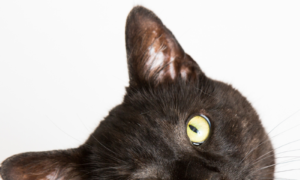With dogs and cats living together, what does a dog think when the cat is teasing him? It’s not difficult to figure out what the cat is thinking, but what does the  dog want out of that encounter?
dog want out of that encounter?
The dog will chase the cat just as certainly as the cat will find a way to escape. If you are a cat owner, or have cats in your neighborhood, then this kind of behavior can be annoying and even unsafe for both cats and dogs.
Why Do Dogs Chase Cats?
Dogs chase cats for lots of different reasons. Sometimes it’s an aggressive kind of chase, when they see a small, furry, active body trespassing on their territory. In that case they want to chase the feline away. The cat will usually run off, and that means the dog will continue chasing it.
Some dogs see cats as prey, but it’s usually a case of defending territory or protection. There are cases where the dog is trying to play or become friends with the cat, but it doesn’t go well. In some cases it may be the cat that is being territorial and the dog may take this as a challenge to his status.
These situations can all result in the dog having an extreme urge to hunt down the cat. The cat can be injured and both animals put in danger.
Stop the Chase
When a dog is chasing a cat outdoors you probably won’t ever be able to fully control what’s happening. When your dog chases a cat it’s much like when your dog chases a squirrel: it’s going to happen.
When your dog is in the house, it’s a different story, and you can make changes so your dog doesn’t chase the cat. Start by introducing the dog and the cat in a room together. Keep your dog on a leash so your cat can escape if necessary. You should make your dog sit and wait while you introduce the two pets and let them meet each other.
If your dog tries to chase your cat, control the situation. Use a firm correction such as “No” while you have the leash in your hand. Sometimes a cat may make the introduction much more difficult, but if your dog learns chasing the cat makes his life unpleasant, it will reduce this kind of impulsive chasing.
Dogs have a strong instinct to chase, so don’t expect your dog to change after just one lesson. It may take many corrections before your dog learns he shouldn’t chase the cat.
You can also teach your dog to stop chasing using the “leave it” command. Most dogs learn this lesson quickly. If you teach your dog he can’t have something when you give this command, your dog will learn to respond the same way when he’s chasing a cat and give it up.
Giving Up Chasing Long Term
There are some dogs that will not stop chasing cats. When it comes to chasing cats or other small animals, there are some dogs who are bred to do this and no amount of training will stop them.
Combine the fact that chasing can be an inborn instinct with the fact that a cat may enjoy taunting your dog or playing around him, and you can have a situation that leads to your dog chasing a cat. Things may get knocked over. There may be noise. If it is too much of a problem, consider crate training your dog when you can’t supervise him indoors.
Dogs and cats living together can create challenges, and the two may never be best friends but they can learn to peacefully co-exist. The answer is consistency and a lot of patience.






I’m afraid in our home it is TOTALLY different. I have a Sheltie and a cat, both will be 7 this year and we got both when they were 6 months and 8 months old….they are the BEST of friends…….any chasing at ALL that takes place is initiated by our CAT……..not our dog………our cat runs the show
My two tolerate each other, which is ok. I think it works best when dog and cat are raised together, as in your case.